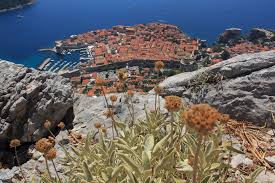Introduction
Dubrovnik, often referred to as the ‘Pearl of the Adriatic’, is a historic coastal city in Croatia known for its well-preserved medieval architecture and vibrant cultural heritage. The city has gained significant global attention and popularity, especially in recent years, making it a must-visit destination for travellers seeking both beauty and history. With UNESCO World Heritage status since 1979, Dubrovnik’s ancient walls and stunning locations continue to attract millions of visitors each year.
Current Events and Tourism Trends
As of 2023, Dubrovnik has seen a remarkable resurgence in tourism following the easing of pandemic-related restrictions. Recent reports indicate that the number of visitors this summer season has surpassed pre-pandemic levels. The city’s iconic Old Town, featuring the renowned Stradun street and the formidable City Walls, has become increasingly crowded yet remains a focal point of cultural exchange and exploration.
In response to the growing tourist numbers, local authorities have implemented measures to manage crowds effectively. For instance, a new timed entry system for key attractions was introduced to help preserve the city’s authenticity while ensuring a pleasant experience for visitors. Additionally, initiatives to promote sustainable tourism have been put into place, focusing on protecting the city’s cultural and natural environment.
Historical Significance and Attractions
Dubrovnik’s rich history dates back to the 7th century, and its strategic position along the Adriatic Sea has played a crucial role in its development. The city was once a maritime republic, known for its wealth and commerce. Today, visitors can explore its historical landmarks, such as the Rector’s Palace, Sponza Palace, and the Franciscan Monastery, which collectively narrate the city’s storied past.
Outdoor enthusiasts also have plenty to enjoy, as Dubrovnik’s stunning coastline offers opportunities for kayaking, swimming, and sailing. The nearby Elaphiti Islands are a favourite getaway, featuring serene beaches and lush landscapes, while the stunning Mount Srđ provides panoramic views of the city and the shimmering Adriatic Sea.
Conclusion
In conclusion, Dubrovnik stands out not only as a prime tourist destination but also as a symbol of resilience in the face of global challenges. As the city continues to adapt and cater to visitors while preserving its heritage, it remains significant for both tourists and locals alike. Those planning to visit this historic city should stay informed about current tourism initiatives and strive to engage in sustainable practices during their stay. With its unique blend of history, culture, and natural beauty, Dubrovnik is undoubtedly deserving of its title as the ‘Jewel of the Adriatic’.
